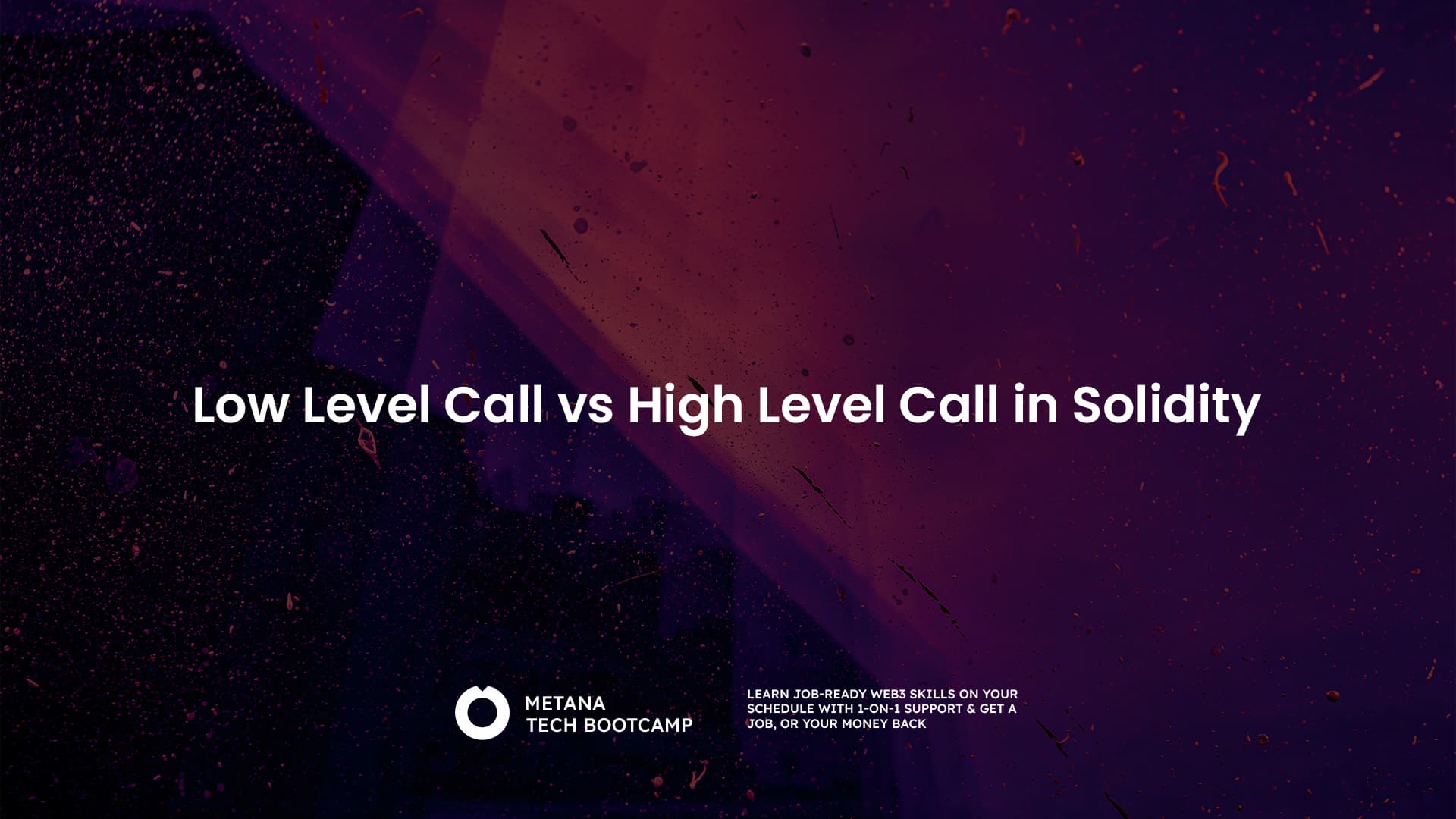TL;DR
Solidity contracts interact with other contracts using high-level calls (via interfaces) or low-level calls (call, delegatecall, staticcall).
- High-level calls are safer and easier to use, automatically reverting on failure and checking if the target contract exists.
- Low-level calls provide more flexibility but require manual error handling and can fail silently.
Key Differences:
- Error Handling: High-level calls revert automatically, while low-level calls return a success flag.
- Contract Existence Check: High-level calls verify the contract exists; low-level calls do not.
- Use Cases: High-level calls are preferred for standard interactions, while low-level calls are useful for advanced scenarios requiring more control.
Best Practices:
- Use high-level calls whenever possible.
- Always check return values in low-level calls.
- Follow security best practices to avoid vulnerabilities like reentrancy attacks.
In Solidity, contracts can interact with other contracts in two main ways: through high-level calls using the contract’s interface or low-level calls using methods like call, delegatecall, and staticcall. Though both approaches use the CALL opcode at the Ethereum Virtual Machine (EVM) level, their handling and behavior in Solidity differ significantly.
Did you know? Over 80% of Solidity vulnerabilities involve incorrect use of low-level calls, often due to missing error handling or security checks. Understanding the differences between low-level calls and high-level calls is crucial for writing secure and efficient smart contracts.
Understanding High Level and Low Level Calls
High Level Calls:
High-level calls in Solidity are made using the contract’s interface. This method is user-friendly and includes automatic error handling. For example:
contractInstance.someFunction();
When this call is made, Solidity generates the appropriate bytecode to handle success and failure cases, ensuring that any errors in the called function result in a revert of the transaction.
Low Level Calls:
Low-level calls provide more control but require explicit handling of errors. They are made using methods like call:
(bool success, bytes memory data) = targetAddress.call(abi.encodeWithSignature("someFunction()"));
This method returns a boolean indicating the success of the call and any returned data, but it does not automatically revert on failure.
Detailed Comparison
Behavior on Failure: When a high-level call fails, Solidity automatically reverts the transaction, bubbling up the error. This behavior simplifies error handling for developers:
contractInstance.someFunction(); // This will revert if someFunction fails
In contrast, a low-level call requires manual checking of the success value:
(bool success, ) = targetAddress.call(abi.encodeWithSignature("someFunction()"));<br>require(success, "Call failed");If the low-level call fails, the success value will be false, and the transaction will continue unless explicitly handled.
Calling Non-Existent Contracts: High-level calls check if the target address contains a contract before executing the call. If the address does not contain code (checked via the EXTCODESIZE opcode), the call will revert:
interface IContract {
function someFunction() external;
}
IContract(targetAddress).someFunction(); // Reverts if targetAddress has no contract
Low-level calls, however, do not perform this check and will return false if the address has no contract:
(bool success, ) = targetAddress.call(abi.encodeWithSignature("someFunction()"));
require(success, "Call to non-existent contract failed");
Practical Example
Here’s a practical comparison of high-level and low-level calls within a Solidity contract:
High-Level Call Example:
pragma solidity ^0.8.0;
contract HighLevelCaller {
function callFunction(address _target) public {
ITarget(_target).targetFunction(); // Reverts if targetFunction fails
}
}
interface ITarget {
function targetFunction() external;
}
Low-Level Call Example:
pragma solidity ^0.8.0;
contract LowLevelCaller {
function callFunction(address _target) public {
(bool success, ) = _target.call(abi.encodeWithSignature("targetFunction()"));
require(success, "Low-level call failed");
}
}
Key Takeaways
- Ease of Use vs. Control: High-level calls offer ease of use and built-in safety, making them ideal for standard interactions. Low-level calls provide greater control and flexibility, useful for advanced scenarios requiring manual handling of call results.
- Error Handling: High-level calls automatically revert on failure, simplifying error management. Low-level calls require explicit success checks and error handling.
- Contract Existence Check: High-level calls check for the existence of the contract at the target address, reverting if none is found. Low-level calls do not perform this check, requiring manual verification if necessary.
By understanding the differences between high-level and low-level calls, Solidity developers can choose the appropriate method for their specific use cases, balancing ease of use with the need for control and flexibility.
FAQs
What is a low level call in Solidity?
- A low level call in Solidity refers to using functions like
call,delegatecall,staticcall, orcallcodeto interact with other contracts. These are more flexible but riskier.
What is a high level call in Solidity?
- A high level call uses Solidity’s function calls to interact with other contracts, which are safer and easier to use than low-level calls.
When should I use low-level calls in Solidity?
- Low-level calls should be used when you need more control over the call process or when interacting with contracts that don’t expose an ABI.
What are the risks of using low-level calls in Solidity?
- Low-level calls can fail silently, making them vulnerable to security issues such as reentrancy attacks if not handled correctly.
How can I make low-level calls safer in Solidity?
- To make low-level calls safer, always check the return value, use appropriate security patterns, and consider using high-level calls when possible.
Why are high-level calls preferred in Solidity development?
- High-level calls are preferred because they are simpler to use, provide better error handling, and integrate seamlessly with Solidity’s type system.
What are common use cases for high-level calls in Solidity?
- High-level calls are commonly used for standard contract interactions, such as transferring tokens or interacting with DeFi protocols.
Can I combine high-level and low-level calls in a Solidity contract?
- Yes, combining both types of calls can be useful. High-level calls offer simplicity, while low-level calls provide flexibility when needed.
What are some best practices for using calls in Solidity?
- Best practices include favoring high-level calls, handling all call returns, implementing checks-effects-interactions patterns, and avoiding unnecessary complexity.
How do high-level calls handle errors in Solidity?
- High-level calls automatically revert on failure, providing built-in error handling which simplifies debugging and improves contract reliability.








